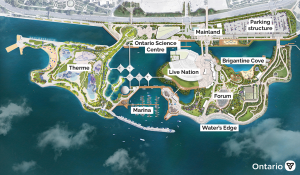Construction stakeholders expressed disappointment but not total surprise that the Workplace Safety and Insurance Board (WSIB) will not be delivering on an expected rate decrease for ICI employers next year.
WSIB chair Elizabeth Witmer and the board’s chair and CEO Tom Teahen told an online audience viewing the WSIB’s annual general meeting Oct.1 that premium rates would be frozen in 2021 to assist employers hit hard by the COVID-19 pandemic. That ends a run of four straight years of lower average premium rates adding up to a 50-per-cent reduction for employers across the board and an even larger drop, 67 per cent over the four years, for construction employers.
ICI employers could have expected more of the same this year without the pandemic. In July, Minister of Labour, Training and Skills Development Monte McNaughton announced plans to separate ICI employers from residential construction employers and create a separate rate group for ICI given evidence that showed the ICI sector works more safely.
But those employers will have to wait until next year for savings.
Pandemic has ‘thrown a wrinkle into everybody’s plans’
“The rate decrease that might have been anticipated by ICI general contractors who then became subjected to the rate freeze would be a disappointment to contractors,” commented Ian Cunningham, president of the Council of Ontario Construction Associations.
“The pandemic has thrown a wrinkle into everybody’s plans and understandably into the WSIB’s plans for a new rate setting model. And I think to provide certainty for employers they decided their best course was to freeze rates at the 2020 level for 2021.”
Teahen said in a statement, “The global pandemic has created many unforeseen challenges for all of us…We have a prudent plan to hold premium rates at current levels while meeting the demands of the pandemic to focus on health and safety and improving digital services.”
David Frame, director of government relations for the Ontario General Contractors Association (OGCA), said he was made aware in August that the WSIB board was considering a rate freeze.
“There was a philosophical decision their board made, they didn’t want the WSIB to have negative impacts on businesses, many of whom were already struggling,” remarked Frame. “We understand that approach, we are disappointed by it, but we understand the approach.”
Teahen was asked during a question and answer session whether ICI contractors who are going through tough times might have welcomed premium relief next year.
“It is a difficult time for everybody,” he responded, referring to the significant rate decreases contractors had enjoyed in recent years. The board made a decision to “stay the course” and keep everyone flat.
The reduction is not lost, Teahen said, suggesting it could be introduced in 2022.
Cunningham responded, “For those contractors who are operating at the edge, who are less well capitalized, who are also challenged with the new costs that are presented by the pandemic which could include the unanticipated cost of PPE and the unanticipated close of delay claims, no doubt there will be some challenging times ahead.”
Frame said the OGCA had expected the rate reduction might be phased in over several years so he could not estimate how much the loss meant in percentage terms to the average ICI employer.
WSIB introduces new Maximum Insurable Earnings Ceiling
But a more worrisome immediate issue for ICI employers, Frame said, was an unexpected hike in the WSIB’s Maximum Insurable Earnings Ceiling for 2021. The new ceiling is $102,800, compared to $95,400 in 2020, a rise of 7.8 per cent, which means employers paying premiums for high-income earners will face significantly higher payments despite the rate freeze.
Changes to the Maximum Insurable Earnings Ceiling are linked to changes in average earnings in Ontario as measured by Statistics Canada each July, and are governed by the Workplace Safety and Insurance Act. Frame explained there were more layoffs to low-income earners than high-wage earners in the first months of the pandemic, resulting in the higher average wage.
Mining, construction and, to a lesser extent, manufacturing employers who employ skilled high-wage earners are going to suffer, Frame said.
“When employers pay into WSIB they pay at a rate reflecting that ceiling, so they are right now paying for G1 $2.30 on a ceiling of 95,400,” he explained of the construction rate group. “The proposal is to pay the same rate, $2.30, on a ceiling of $102,800. Their premiums didn’t go up but their payments have gone up 7.8 per cent.
“That is a hit.”
Frame said he has already been in conversations with the Ministry of Labour and “they understand the problem.”
“It is our intention to work with the government to get legislative change by the end of the year,” said Frame.
Follow the author on Twitter @DonWall_DCN.










Recent Comments